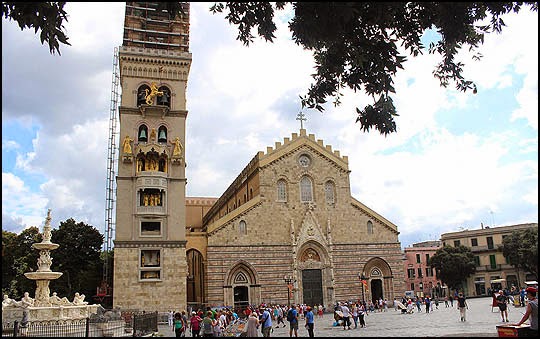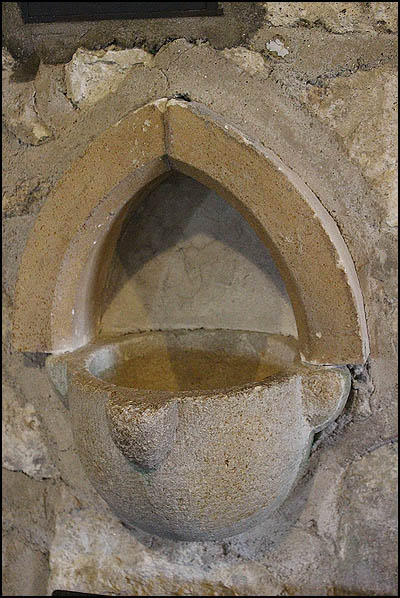In September 2014 we were on a cruise, taking in various ports in and near Italy. This day we docked in Messina, Sicily and as part of a sight-seeing excursion we visited the Duomo or basilica of Messina.

In particular the visit was timed to end at the basilica and we were dropped off in the square in good time to watch the animated clock tower performance at twelve noon. The ship had been intending to leave at twelve thirty which would have meant missing this, but they extended the "all aboard" deadline to allow tours and independent passengers to see the clock.

It was built by the Normans, those descendants of the Norsemen who hadn't quite done with wanting to spread out from Scandinavia searching for warmer places to spend winter in. The church was consecrated in 1197, the King and Holy Roman Emperor Henry VI and his Queen Constance I of Sicily being on hand to witness the ceremony be performed by Archbishop Barardo.

We had time before the show to have a quick look inside the cathedral. It contains the 13th century tomb of Conrad IV, a king of Germany and Sicily, but repeated earthquakes (the last in 1908) and the bombing of WWII means most of the church is reconstructed.

The campanile or clock tower has several interesting features. On the side facing the basilica are two clock faces: the lower one is a perpetual calendar with a rotating outer ring showing the day and month, with a marble statue of an angel, just discernable on the left side of the dial on the photo, pointing out the day, whilst moveable panels within the ring ensure that the moveable feasts such as Easter are always correctly shown. Underneath the central star-pointed sun a panel shows the currrent year. The top dial is a planetarium and shows the nine planets geared and spaced in true scale to rotate around the central sun, whilst the astological signs of the Zodiac show which sign each planet is within.

On the side of the tower facing the square are animated displays. At twelve noon the souvenir sellers stop their incessant peddling of their tea towels, magnets, wooden fold-up fruit bowls etc. and the clock chimes the hour. Following this, the lion in the top window waves his flag, wags his tail and tilts his head back to roar. And it really does give a very realistic and loud roar!
Then the giant cockerel flaps his wings and crows whilst two legendary defenders of Messina ring the bells at either side of the cockeral. Just below an angel hands a letter to Messina's patron saint the Madonna of the letters whilst the figures of St Paul and ambassadors of Messina pass before her and bow. In the next window a different biblical scene is shown during each quarter of the year. As the loudspeakers play the Ave Maria, the next window comes to life. A golden church, representing the Sanctuary of the Madonna at Montalto, appears rising from behind a cloud as a dove flies in circles overhead; robed figures turn and bow to a throne as they pass before it. In the bottom window a different classical figure (Apollo, Mars, Diana etc.) appears, a different figure each day of the week, each driving a chariot pulled by a different animal. I totally missed any movement in some of the windows, perhaps they move too slow given the short time we were there.
No matter how clever and intricate something is, these days it generally has to be judged against the latest Hollywood CGI and, against such wonders, the clock seems to be very slow and intermittent. Feedback and ratings on websites seem to show mixed reception. In 1933 when it was first installed, it must have knocked everyone's socks off. Even today, the first time the lion's head is thrown back and the loud roar comes from the tower, it is a brilliant moment.
At the end of the show, a few people clapped, a few cheered, the tour guides waved impatient flags, the peddlers pounced and the independent travellers from the ship shot off to dash down the hill and onto the ship before it sailed!
Return to European Churches and Cathedrals Index Page




















































